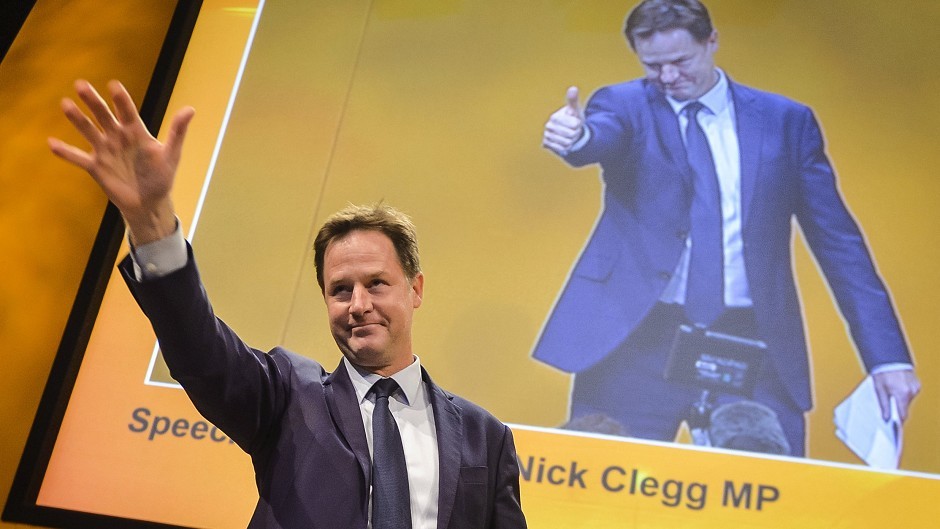Former Liberal Democrat leader Nick Clegg has warned of the stark contrast between voters’ “highly informed” approach to the Scottish referendum and the forthcoming poll on EU membership.
While all those involved in the Yes and No campaigns last year “cared passionately”, Mr Clegg said that for most people the EU is very low on their list of priorities.
Speaking at a fringe event at the party conference in Bournemouth, he also insisted the SNP had a mandate for a referendum, whereas the EU equivalent was the “expression of David Cameron’s weakness” within his own party.
The former deputy prime minister said: “The vast majority of people just don’t care about Europe as much we do, and as much as people did about Scotland and the Scottish referendum.
“Most people put it quite low down on their list of priorities and it’s a very perilous thing to do therefore to ask people a question on a subject which has a huge bearing on our economic and social future but about which they don’t really care very much.
“People will act in a much more unpredictable way than the highly, highly involved and informed manner in which the Scottish referendum played itself out.
“The reason we have got the referendum is because of internal Conservative party division. It is basically a function of this endless, draining civil war within the Conservative party.
“It’s an expression of David Cameron’s weakness within his own party that he has actually had to resort to a referendum.”
In comparison, he said, last year’s Scottish referendum “had to take place”, adding he was proud to have been deputy prime minister in the government that made it happen.
But he went on: “You have got a Conservative party that has pushed for a referendum because of its own obsession with the subject not because there was a great clamour.
“There’s a lot of people out there who just haven’t even bothered to think about how they are going to vote on the European referendum.”
In that context, he stressed the importance of making the “big picture” arguments, such as the reliance of many jobs on Britain’s membership of the EU, ahead of the vote which Mr Cameron has pledged to hold before the end of 2017.
In his earlier conference speech, for which he received a standing ovation and cheers, Mr Clegg complained that his party won a million more votes than the SNP yet has only a seventh of the seats it does.
